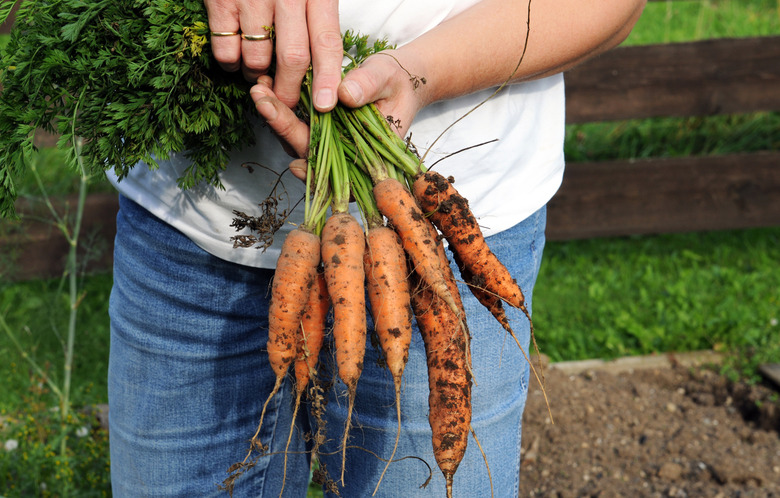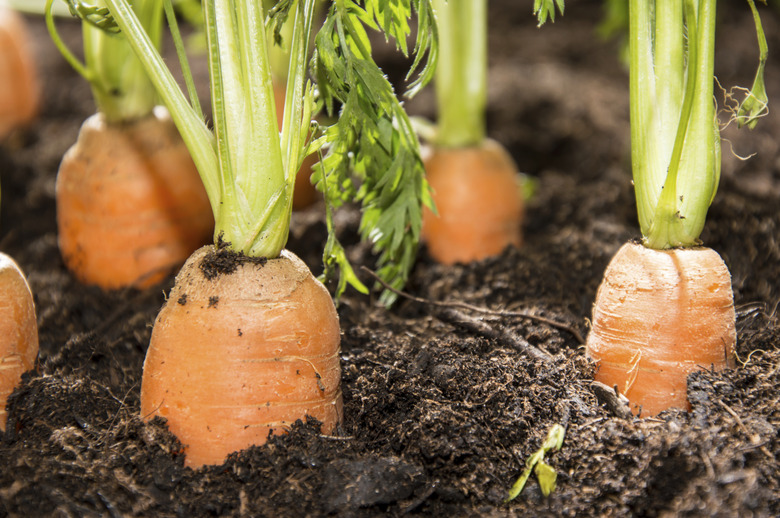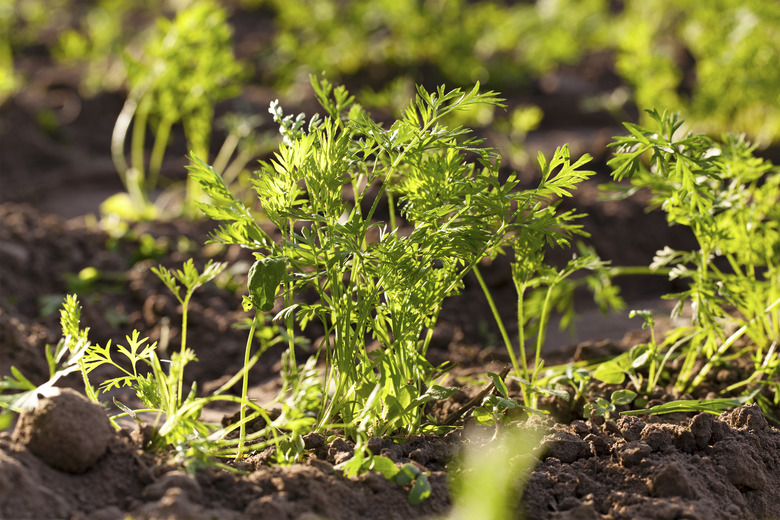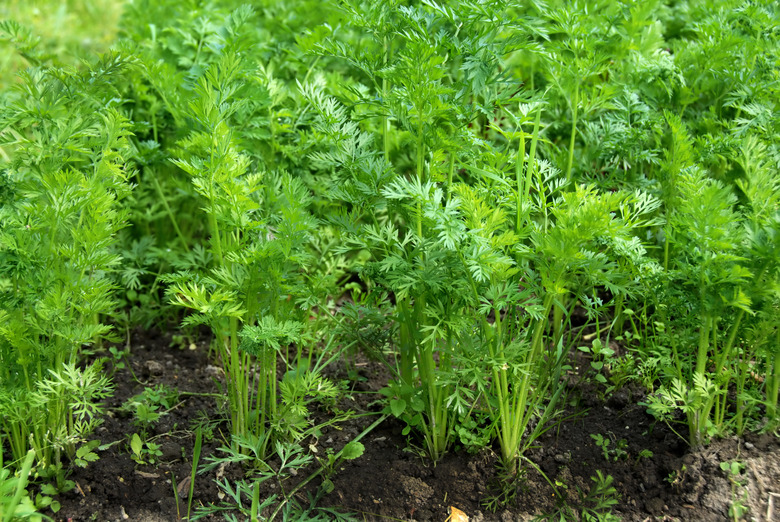Carrot Plant Life Cycle
Carrots are a root vegetable. This means that humans typically only eat the orange edible taproot–main plant root–and not the edible leafy greens that are above ground. Carrots are not part of the typical annual–one year–or perennial–many repetitive years–plant cycles. Carrots are actually classified as biennials, according to the World Carrot Museum.
What is a Biennial?
Biennials like carrots live for two growing seasons before the completion of their life cycle, according to the University of Illinois Extension. Biennial plants grow vegetatively–produce leaves–for the first season of life. After a period of dormancy–rest without growth–following the first season of growth biennials resume growth for a second season, flower, seed and die.
Germination
Carrot plants produce seeds during the second season of biennial growth. Pollen is produced and delivered to the stigma, according to the WCM. The plant then produces seed. Carrot seeds are exceptionally small: 2000 seeds can fit in a single teaspoon. Carrot seeds take 10-12 days to germinate and begin growth.
Growth
Carrots will grow leafy green shoots from the taproot. These shoots are where flowering happens during the second season of growth. Carrots are usually prime for harvesting within three months, states the WCM; however, carrots can and frequently are harvested early. Baby carrots are merely immature carrots, but baby-cut carrots are mature carrots shaved to baby size.
Dormancy
The period of carrot dormancy between seasons is typically winter in most areas the carrot is cultivated. Carrots growth is essentially complete when it enters dormancy, and flowering may not happen if dormant states experience interruption from unseasonably warm winters or late frosts. Carrots need a dormant state to prepare for the reproduction period.
Carrot Variants
Carrots are available in a variety of cultivars–varieties human-cultivated for different traits–that produce different shapes and colors of carrots. Some carrots–such as Thumbelinas–are very short and some–such as White Fodder–are not orange in color, according to the WCM. Many colors and shapes of carrot cultivars are available to discernible growers seeking particular carrot results.





